The Best Homemade Ketchup
If you want to make homemade ketchup, fermented ketchup is the best choice. This is especially true if you are already a fermentation fan. The fermentation process for ketchup is not long because it’s more similar to a culturing process, like when you make yogurt.
Microbes in brine from already fermented sauerkraut (or any fermented vegetable) and microbes in raw vinegar serve as starter cultures to ferment the tomato paste and other ingredients into delicious ketchup.

Ingredients for Fermented Ketchup
You can turn fresh tomatoes into ketchup, but starting with tomato paste is much simpler. You can use homemade tomato paste or store-bought. Both options work great. I always use store-bought organic tomato paste.
One day, when I have a huge garden, I’m sure I’ll have plenty of jars of homemade tomato paste to use in this recipe.
- 2 (6oz) cans organic tomato paste
- raw honey
- raw vinegar (ACV or homemade vinegar)
- 3 tablespoons sauerkraut brine from finished sauerkraut
- onion powder
- garlic powder
- sea salt
- black pepper to taste
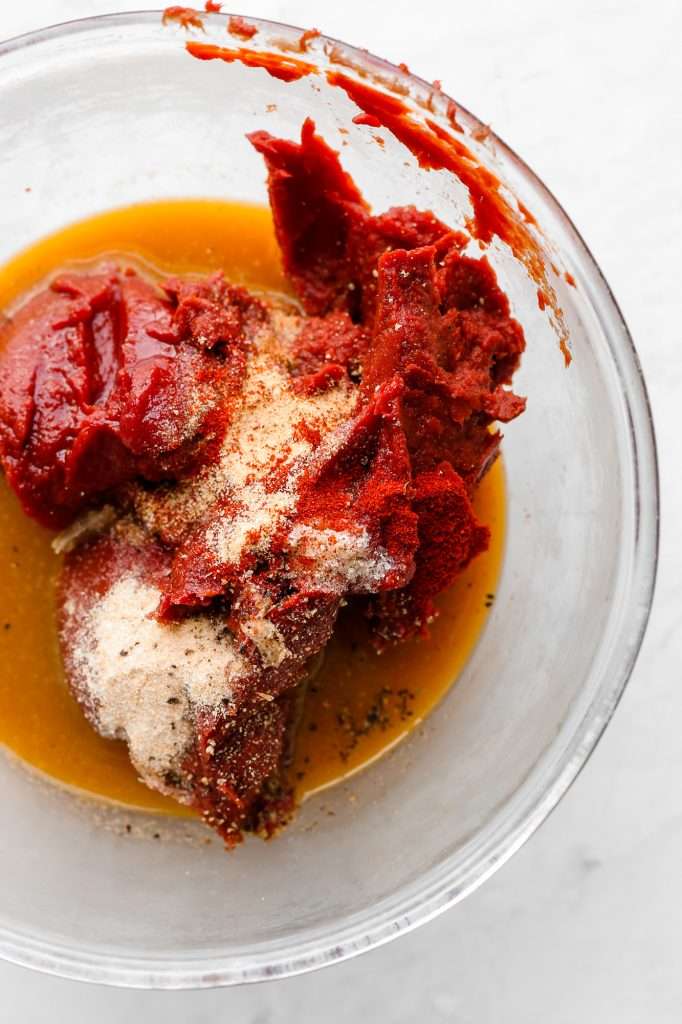
Making Fermented Ketchup
This is one of the easiest fermented foods to prepare, and you will dirty very few dishes making it. You only need a glass mixing bowl, a whisk, and measuring cups/spoons.
Once you have all your ingredients gathered, measure everything into the bowl. Then whisk everything together until smooth. You can serve the ketchup immediately, but the flavor is better if you wait for it to ferment.
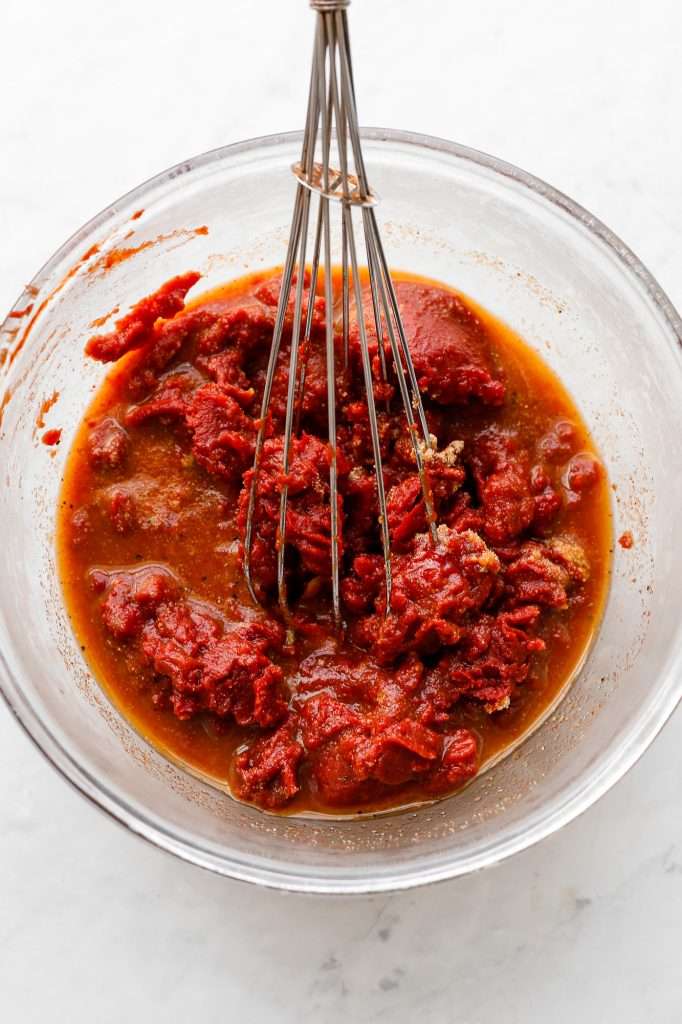
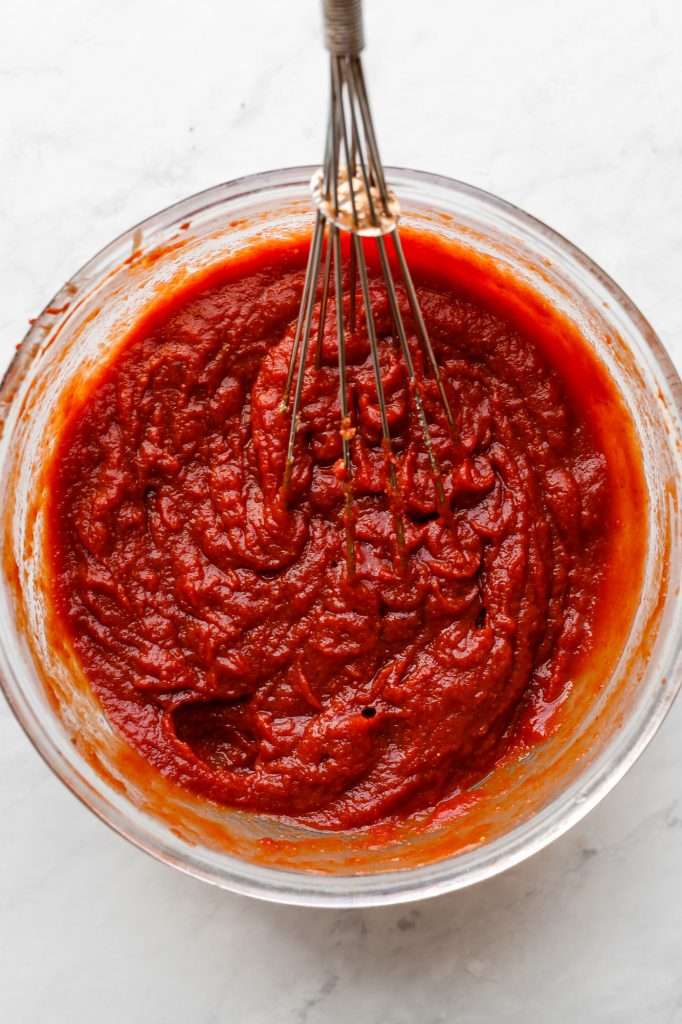
How Long Should You Ferment?
You don’t need to ferment this ketchup for long; it only needs to ferment for 24-48 hours. I like letting it sit at room temperature in a closed jar for 48 hours to develop the flavors. Also, I stir it up a couple of times while it ferments. This ensures even flavor throughout the ketchup.
After fermenting at room temperature, you can immediately serve the ketchup or let it chill in the fridge.

How to store Fermented Ketchup
Fermented ketchup should last in the fridge for about 6 months. To store it in the fridge, make sure it’s in an airtight jar, and don’t dip anything (like french fries) directly into the jar.
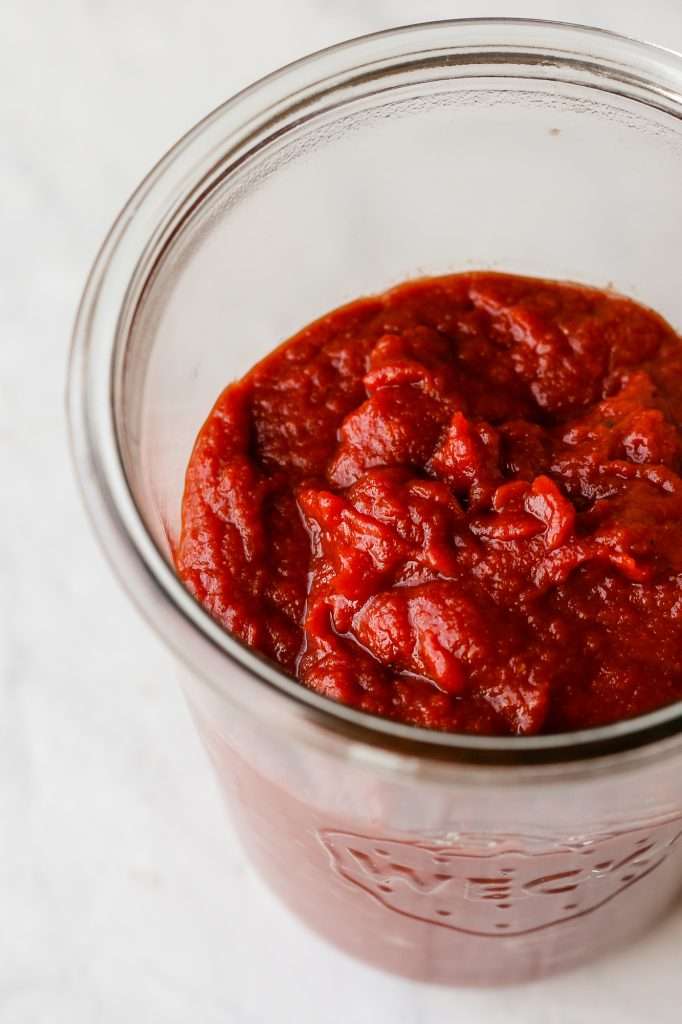
Recipes to Pair
- Jalapeño Cheddar Burgers with Cilantro Lime Mayo
- Vegan Chickpea Burgers with Turmeric and Sweet Potato
- The Best Fried Pickle Dipping Sauce
- Lemon Pepper Fries


How to Make Fermented Ketchup in Under 10 Minutes
If you have some leftover over brine from any fermented vegetables, this fermented ketchup is the perfect recipe for you! It only takes about 10 minutes to prepare. Eat it immediately or let it ferment for 24-48 hours to develop the flavors.
- Prep: 10 minutes
- Total Time: 48 hours 10 minutes
Ingredients
- 2 (6oz) cans organic tomato paste
- 3 tablespoons raw honey
- 3 tablespoons raw vinegar (ACV or homemade vinegar)
- 1/4 cup sauerkraut brine from finished sauerkraut
- 1 teaspoon onion powder
- 1 teaspoon garlic powder
- 1/8 tsp cayenne
- 1/4 tsp paprika
- 1 teaspoon sea salt (or more to taste)
- black pepper to taste
- Water*
Instructions
- Strain some brine from any finished fermented vegetables you have. I think sauerkraut brine works best.
- Combine all the ingredients in a large bowl and whisk together until smooth. You can add a little filtered water as needed to thin it out to your liking.
- Taste and adjust any seasoning to your linking. Add more salt or pepper if needed.
- Place the ketchup in a 16 to 25 ounce jar, and cover with a regular lid. (You can eat some right away, but the flavor is better if you wait).
- Allow the ketchup to sit at room temperature for about 48 hours, stirring it occasionally.
- After 48 hours at room temperature, store the ketchup in the fridge for about 6 months.
- Enjoy on homemade burgers and with homemade fries.





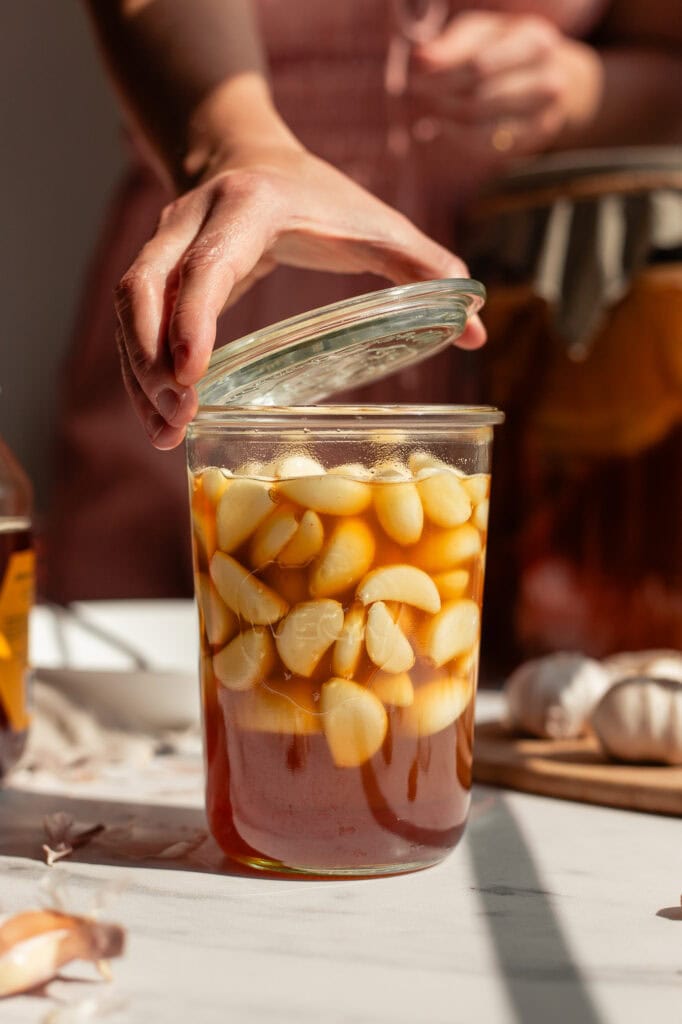









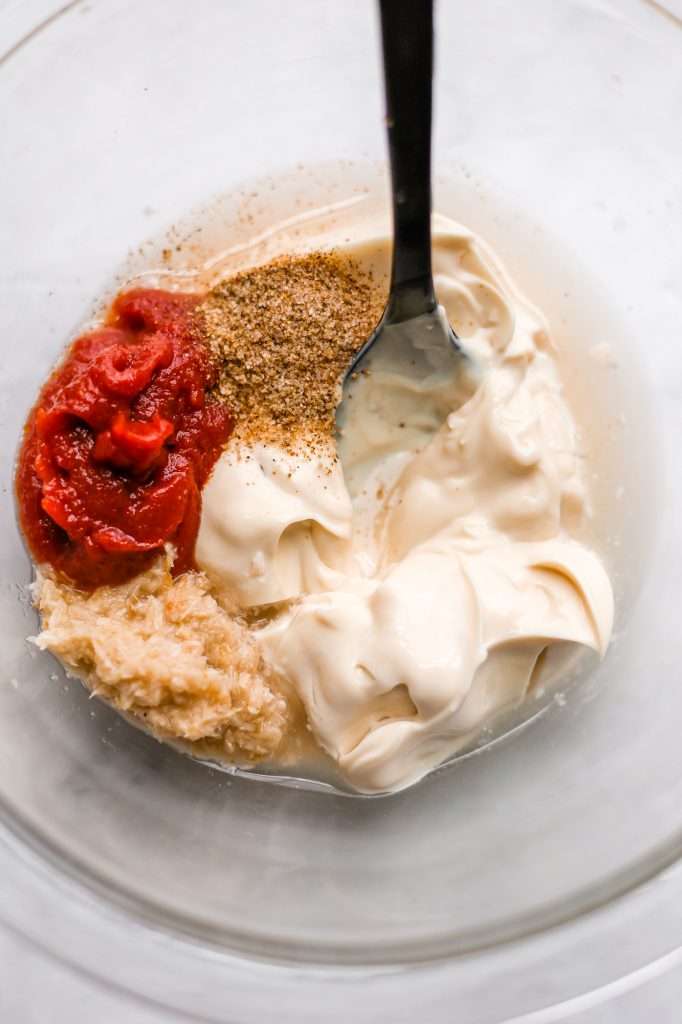

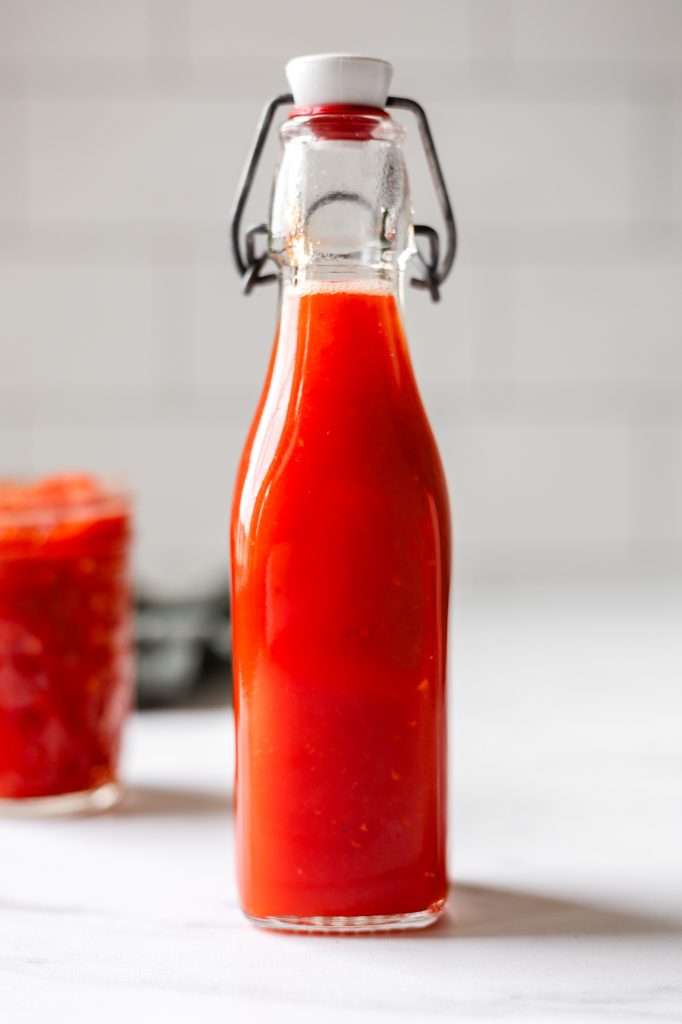


I made this and fermented the ketchup for48 hours. It was a bit too tomato-y for me though. I saw some other non-fermented ketchup recipes online that say to simmer the tomato paste mixture for 15 minutes. If I did that, could I let it cool and then add the Sauerkraut brine yo culture it?
I haven’t tried it so I don’t know for sure, but sounds like it should work.